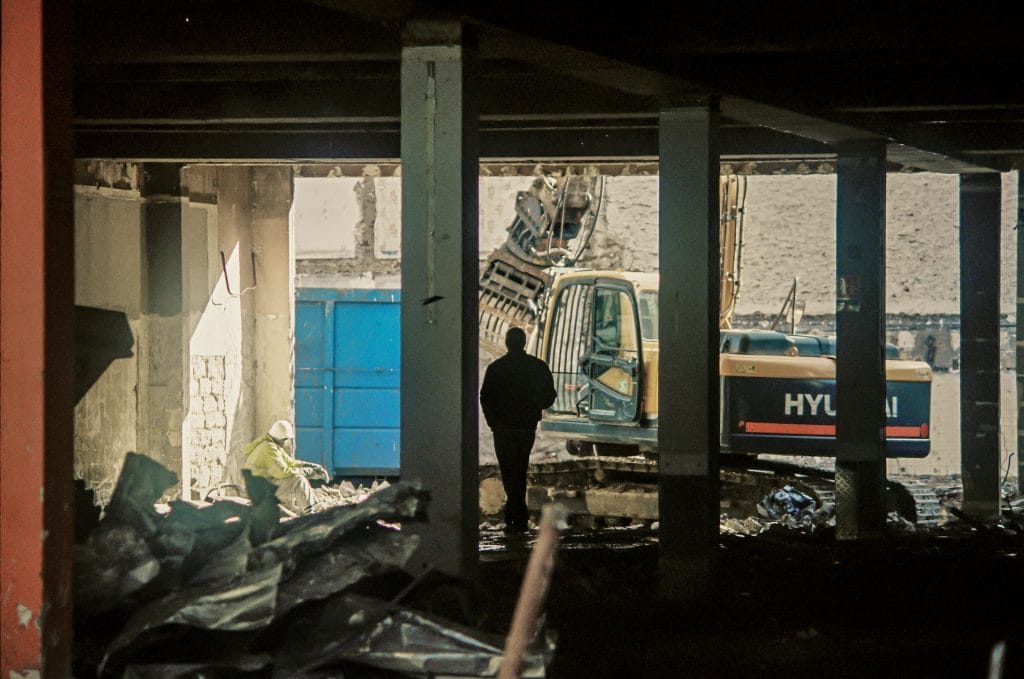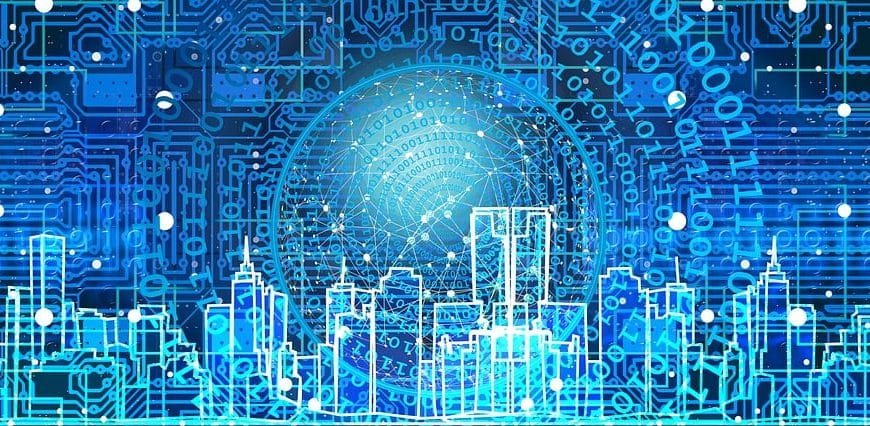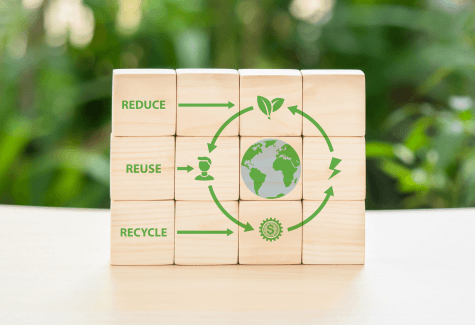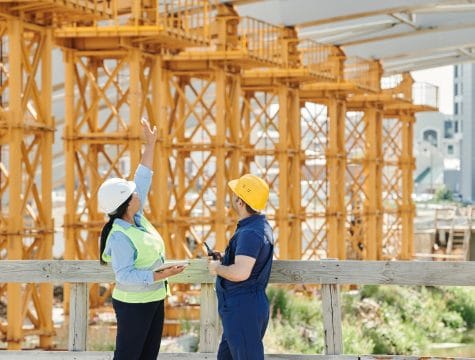von Alethya Cuberos
Technologies for the construction sector to transition to the circular economy
Along with the implementation of the circular economy strategies, such as extending building lifespans, redesigning with circularity in mind, reusing components, and recycling materials. We should also keep in mind the development of the new technologies that help to scale the implementation. Thus artificial Intelligence (AI) has started playing a significant role in various industries, and might have an impact on the construction transformation. It has the potential to impact infrastructure projects positively by enabling tasks like: robotic sorting, automated assessment of used products, and recommendations for their reuse, resale, repair, or recycling to maximize value preservation.
What are the applications of AI in circular construction?
AI can play a pivotal role in advancing technologies that reduce waste at various project stages. For example, before commencing the deconstruction process, AI tools such as Machine Learning and Computer Vision can assess the feasibility of reusing, recycling, or preserving materials.
This can significantly enhance renovation possibilities and overall resource efficiency. Furthermore, the implementation of robots enhances the quality of deconstruction work, ensuring more precise, reliable, and accurate sorting of recyclable materials.
AI for Pre-demolition auditing

A successful circular economy depends on maintaining materials in use for as long as possible. However, the techniques and procedures for preserving or reusing materials can be time-intensive and costly. Building inventory processes or pre-demolition practices are now being utilized to assess their post-use potential before demolition and renovation work, ensuring that all market participants have adequate and consistent data depth at every stage of the value chain.
In the UK, the company as Reusefully focuses its efforts on pre-redevelopment, pre-demolition and pre-refurbishment audits in support of sustainability standards.
In Germany, the recently published DIN SPEC 91484 is dedicated to developing a procedure aimed at facilitating high-quality post-use practices, spanning from prevention to reuse and recycling while promoting material recirculation. This process comprises two key stages: a preliminary examination and a detailed assessment. The document outlines the specific information required for evaluating the individual potential of building products for post-use, including data related to the building’s location, construction year, building class, and usage type. Based on this fundamental information, initial determinations can be made regarding the suitability of building products for reuse. Subsequently, the detailed assessment is carried out, involving the preparation of expert opinions. Furthermore, the document delineates the stakeholders responsible for overseeing this process, encompassing architects, structural engineers, hazardous materials assessors, demolition contractors, building inspection authorities, heritage conservation authorities, and others.
Combination of this approach with the AI technology might scale the process significantly.
In 2020, a project in the UK used Deep Neural Networks (DNN) to predict salvage and waste amounts in buildings before demolition. The method, based on 2280 demolition records, achieved an impressive average prediction accuracy of 97% for recycling and the reuse of landfill materials, thus enabling a systematic approach to circularity in end-of-life building materials. Consequently, AI can be employed to analyze the existing building stock and the factors influencing whether a building is demolished. Simultaneously, it addresses issues related to the poor quality of data on building materials over time. This advantage stems from the expectation that, with time, AI will improve its ability to predict a building’s material composition as the entered data is validated through inspections and measurements (source).
DNN was also applied by researchers to create a vision-based system for automating inventory management in industrial construction facilities, specifically in a window-cutting station manufacturing line. Through the application of contour-based image processing algorithms and deep-learning classification models, they achieved a 90% accuracy in quantifying waste during the cutting process. This system has the potential to streamline continuous data collection for building inventory.
However, it’s worth noting that these developments are currently in the research phase, as market-ready projects have not yet been encountered.
AI-powered robotic deconstruction

Deconstructing buildings has been a time-consuming and labor-intensive procedure. Demolition typically results in the destruction and disposal of valuable building materials and components. This leads to a significant waste of resources, including materials like concrete, steel, and wood, which could be reused or repurposed.
Today, the integration of AI-powered robotic deconstruction might reshape the game. What is the current stage of development?
Deconstruction and Demolition Efficiency: AI-powered robots can be programmed to carefully disassemble and remove building components, such as walls, floors, and fixtures, in a way that maximizes their potential for reuse. These robots can identify and salvage valuable materials, reducing the waste associated with traditional demolition.
In 2022, Brokk, the world’s leading manufacturer of remote-controlled demolition robots, announced the addition of the BROKK SURFACE GRINDER 530 attachment for material removal, such as paint and asbestos, surface preparation, and polishing on walls, floors, and ceilings in renovation and restoration applications.
Precision in dismantling: Another significant application is the advanced control systems that allow robots to do accurate and complex jobs, such as cutting through steel beams or removing concrete walls, with minimal impact on nearby structures. This is crucial for partial dismantling or renovation projects. Additionally, AI-driven robots can optimize the dismantling process by analyzing a building’s structure and determining the most efficient sequence of actions, saving time and resources while reducing the environmental impact of demolition.

KUKA Robotics, a German manufacturer specializing in industrial robots, offers robots with specialized tools for tasks like cutting and dismantling. They are also involved in the EU-funded SmartHandle project, collaborating with several European countries. The project, running from 2023 to 2025, aims to improve the efficiency and eco-friendliness of handling procedures. It includes developing AI-based software components for better adaptability and efficiency, particularly in processes like multi-arm robot planning and AI-based graspin.
Material Sorting and Recycling: Machine learning algorithms enable robots equipped with cameras, lidar, and ultrasonic sensors to explore and perform complicated tasks autonomously during the dismantling of structures, allowing them to track their surroundings and make decisions based on the information they gather. This autonomy enhances safety and efficiency in robotic demolition systems.
AI in robotic building deconstruction has the potential to revolutionize material recycling and reuse by using sorting algorithms to separate materials like concrete, steel, and wood. This reduces landfill waste and provides reusable materials, promoting a circular economy in construction.
For instance, ZenRobotics has been applying AI and robotics to sort construction and demolition waste. The AI software, called ZenBrain monitors waste through cameras and sensors, and examines the sensor data, producing a real-time assessment of the waste flow. Using this evaluation, robots determine which items to select, efficiently separating the waste components with exceptional accuracy. ZenRobotics has been used in a recycling plant in Switzerland recovering construction waste at a rate of 200 tons per hour.
The Road Ahead
Scaling up AI and mainstreaming circular building construction remains an important challenge. It demands not only system innovation so that technological progress coexists with socioeconomic and behavioral changes but also to regulate the potential benefits to prevent disparities.
Ethics and governance are important to preserve public trust and ensure fair and responsible use. Unchecked AI solutions could lead to unfair advantages in the construction industry and raise accountability concerns.
Integrating AI into robotic demolition presents challenges, including the need for reliable algorithms and access to significant data, often privately owned by research teams. AI-powered robotic deconstruction in construction is still an emerging field, and there were several research projects and prototypes, but widespread implementation was still in the early stages. The initial cost of robotic demolition systems remains also a barrier, particularly for smaller construction companies.
Nevertheless, a recent report by Report Ocean, forecasts that the global construction and demolition robots market will reach $2.06 billion by 2032, growing at an annual rate of 16.9% from 2022 to 2032, driven by the rapid urbanization and industrialization in the developing countries.
As contractors look to tackle challenging jobs, some are inevitably turning away from physical labor and toward robotics and today there are several big-name demolition robot manufacturers such as Advanced Construction Robotics Inc., Apis Cor Inc., Brokk AB, Conjet Ab, Construction Robotics LLC, Husqvarna AB, Dusty Robotics, offering a variety of features on their machines.
Certainly, the use of AI in construction and demolition differs from one region to another, influenced by factors like technological readiness, labor expenses, and regulatory structures. Nonetheless, as the advantages of AI-powered robots become increasingly evident, it is anticipated that their global adoption will rise in the next decades. Germany, e.g recently announced to double its public funding to 1.6 billion euros for AI research within the next two years as part of its AI Strategy. However, the AI action plan of the Federal Government targets more to expand AI infrastructure than the construction industry, which might still have a long way to go to combine the full potentials of these technologies.




